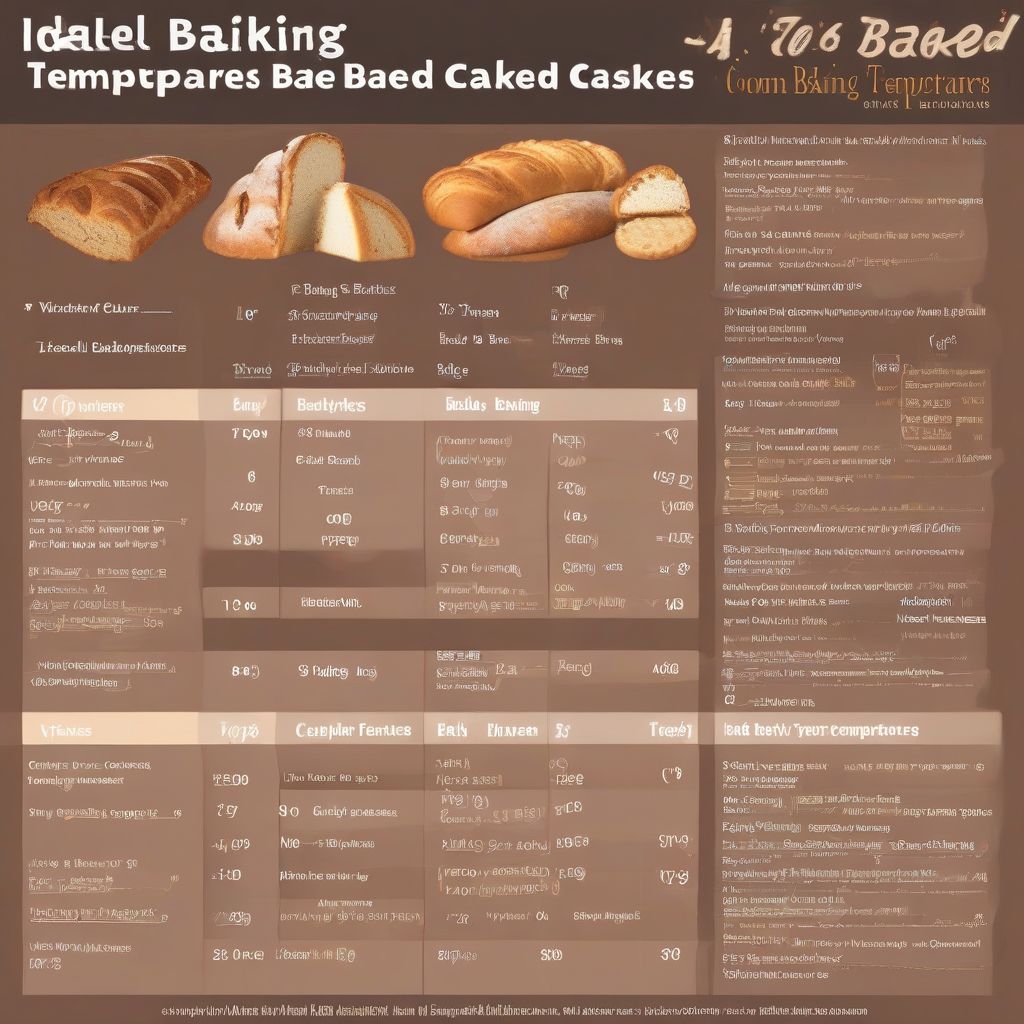Have you ever pulled out a tray of cookies, only to find them burnt on the bottom and doughy in the center? Or perhaps your cake stubbornly refused to rise, leaving you with a dense, unappetizing brick? As a nutritionist and meal prep coach, I’ve seen firsthand how frustrating baking mishaps can be. But here’s the good news: achieving bakery-worthy results at home often boils down to one crucial element – temperature control.
The Science Behind the Heat: How Temperature Affects Your Baked Goods
Baking is a delicate dance of chemistry, and temperature is the conductor of this intricate orchestra. Every ingredient, from flour to sugar to eggs, reacts differently to heat. Understanding these reactions is key to unlocking the secrets of perfectly baked treats.
1. Gluten Development and Structure:
Gluten, the protein network formed when flour mixes with liquid, plays a vital role in giving baked goods their structure. Too much heat too quickly can cause gluten to overdevelop, resulting in tough, chewy cookies or a bread with a dense crumb. Conversely, insufficient heat can leave your baked goods flat and crumbly due to underdeveloped gluten.
2. Leavening Agents in Action:
Leavening agents like baking soda and yeast are responsible for the airy texture we love in cakes, bread, and pastries. These little helpers release gas bubbles when heated, causing your treats to rise. However, they require specific temperature ranges to work their magic. If the oven is too cool, the leavening agents won’t activate fully, resulting in dense, flat results. On the other hand, excessive heat can cause them to release gas too quickly, leading to collapsed cakes or bread with large, uneven holes.
3. Maillard Reaction: The Art of Browning
Ah, that beautiful golden-brown crust—a feast for the eyes and a promise of delicious flavors! This culinary masterpiece is the result of the Maillard reaction, a chemical process that occurs between amino acids and sugars under heat. Temperature plays a critical role in controlling the speed and intensity of this reaction, impacting both the color and flavor of your baked goods.
4. Moisture Evaporation and Texture:
The amount of moisture present in your baked goods significantly affects their texture. Temperature control directly influences the rate of moisture evaporation during baking. High temperatures lead to rapid moisture loss, potentially resulting in dry, crumbly treats. Maintaining the right temperature ensures a controlled release of moisture, contributing to a soft, tender crumb.
 Baking Temperature Chart
Baking Temperature Chart
Common Baking Disasters and How Temperature Control Can Save the Day
Now that we’ve explored the science, let’s dive into some real-life baking scenarios where temperature control can make all the difference:
1. The Case of the Sunken Cake: A cake that sinks in the middle often points to issues with leavening or oven temperature. Baking at too low a temperature can prevent the cake from setting properly before the leavening agents lose their potency.
2. The Cookie Conundrum: Burnt Bottoms and Pale Tops: This common cookie catastrophe often stems from uneven oven heat or using the wrong baking sheet. Dark, heavy baking sheets tend to absorb and distribute heat more intensely, leading to burnt bottoms.
3. The Bread Blunder: Dense and Doughy: Under-baked bread with a dense, gummy texture indicates insufficient heat or baking time. The internal temperature of bread needs to reach a certain point to ensure proper gluten development and starch gelatinization.
Tips for Mastering Temperature Control in Your Kitchen
Achieving baking success doesn’t require professional-grade equipment. Here are some practical tips to enhance temperature control in your kitchen:
-
Invest in an Oven Thermometer: Don’t rely solely on your oven’s temperature dial. Oven temperatures can fluctuate, so an oven thermometer is essential for accurate readings.
-
Preheat Like a Pro: Preheating your oven is crucial for ensuring the proper temperature from the moment you put your treats in.
-
Calibrate Your Oven: Over time, ovens can lose their calibration, leading to inaccurate temperatures. Consult your oven’s manual for calibration instructions or consider having it professionally calibrated.
-
Choose the Right Baking Pans: Different materials conduct heat differently. Invest in high-quality baking sheets and pans made from materials like aluminum or stainless steel, known for their even heat distribution.
-
Avoid Overcrowding the Oven: Adequate airflow is crucial for even baking. Avoid overcrowding your oven to allow for proper heat circulation.
The Joy of Baking: It’s All in the Details
Baking, much like life, thrives on balance and precision. By understanding the impact of temperature control, you hold the key to transforming simple ingredients into culinary masterpieces. Remember, every degree matters. So preheat your oven, grab your favorite recipes, and embrace the joy of baking with confidence!
[amazon bestseller=”oven thermometer”]
Ready to Elevate Your Baking Game?
Temperature control is just one piece of the baking puzzle. Share your baking triumphs (and perhaps a few mishaps) in the comments below. Let’s create a community of baking enthusiasts, sharing tips, tricks, and recipes for success!
